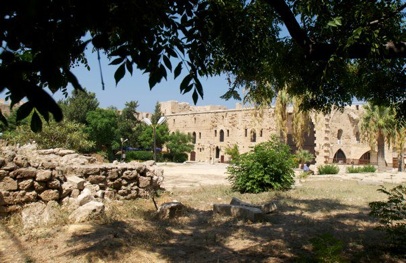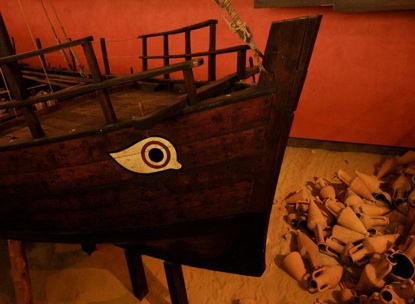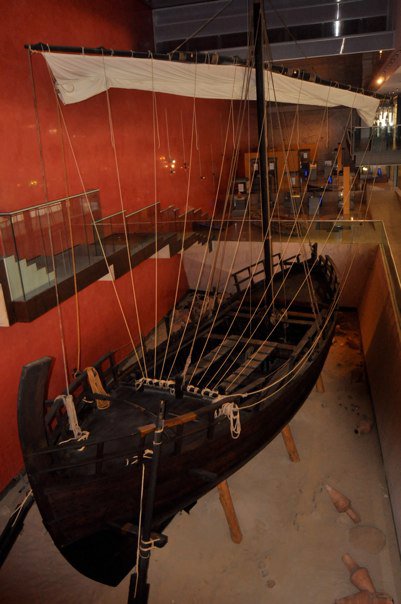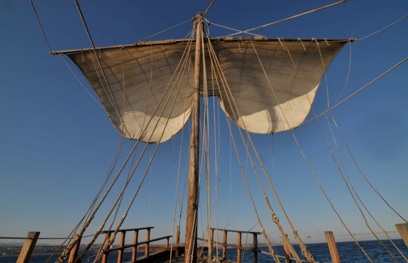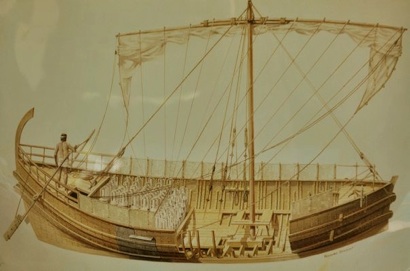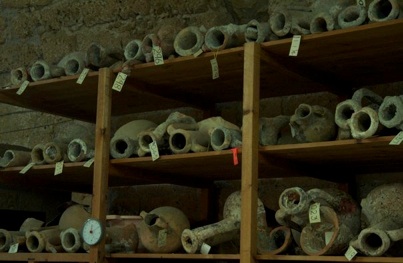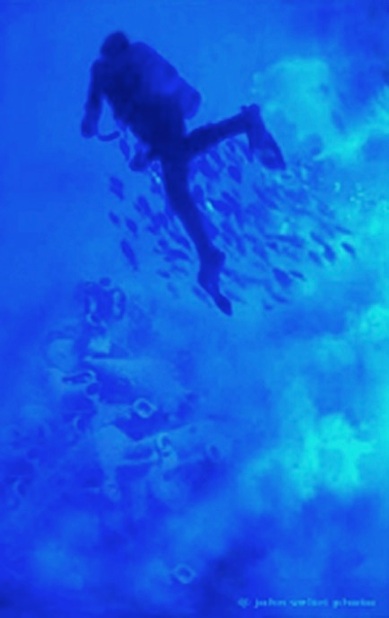THE KYRENIA Mysteries of an Ancient Greek Ship

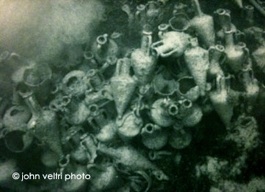
Uncovering the amphora
From the sea... into the storm
Kyrenia’s ancient amphora

We dove into the sea that first day from a boat that was owned by Andreas Kariolou, the man who had first discovered the shipwreck a couple years before I arrived on the scene. I remember Andreas as a very open-hearted, charismatic man. An accomplished sponge diver of Greek origin, he reminded me of someone in my family, from somewhere in my past. We got along very well.
The year was 1968. The world was in the midst of several wars and Cyprus was also going through very difficult times. Soldiers with machine guns were everywhere. Yet at the same time, even in Cyprus, that amazing explosion of creative energy that had started earlier in the sixties was continuing. It profoundly affected me and all the young people I knew.
In the process of diving twice a day and then developing my photographs in the darkroom after each dive - working in those two dark fertile wombs - I discovered a deep peace. Diving into the depths of the sea, I entered a vast undiscovered country within the realm of my unconscious. A place where I learned how to breathe. A place where the ancestors live.
Andreas Kariolou
Although I was no beginner to diving and being underwater, diving to such depths for me was a totally new experience. When I began diving in Cyprus, I had to go through what I now see as a process of discovery: discovery about my situation, but more importantly discovery about myself. I had to discover how to let go of fear, trust my innate abilities, and adjust to my new underwater environment. It wasn’t easy. On my days off I always went diving with Andreas. I trusted his life-long experience and what I learned from him I incorporated in my daily routine.
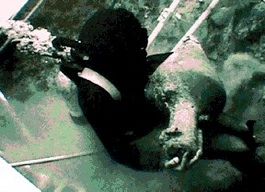
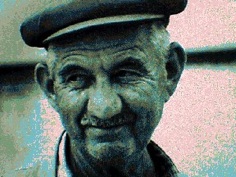

A merchant ship that is believed to be of Greek origin, the Kyrenia (so called because it was discovered off the coast of Kyrenia in Northern Cyprus) sailed the Mediterranean during the aftermath of Alexander the Great.
Carrying a cargo of hundreds of wine amphora and thousands of almonds, the ship was approximately 30 years old on its final voyage. Because of its excellent condition when discovered and excavated in the late 1960s, it is thought that the ship sank in relatively calm waters in 300 BC.
Stereo photogrammetric underwater photographs of the Kyrenia, taken by Veltri during the ship’s two year excavation, were used by Michael Katzev and his team during reconstruction.
The Kyrenia is presently housed in the ancient Kyrenia Castle in Northern Cyprus. It is the oldest Greek trading ship to have ever been recovered from the sea.
Click on photo to see more.
Scroll down to see MORE

Sponsored by the National Geographic Society and the University of Pennsylvania, I was hired to go to Cyprus as an underwater photogrammetric photographer to document the process of excavating the Kyrenia shipwreck in 3-dimensional photography. I joined Michael Katzev, who directed a team of 50 archeologists, technicians, and other divers. The Kyrenia, which is known to be the oldest Greek shipwreck discovered, was buried in 10’ of sand and lay 100’ beneath the water’s surface.
Diving into the Depths of the Ancestors - by John Veltri
When I first arrived in Cyprus in the late sixties, as underwater photographer for the ancient Kyrenia Shipwreck archeological expedition, I felt at home. Being there reminded me of something very familiar, something that spoke of my ancestry. Being in the Mediterranean, feeling the climate, and talking with the people made me think of my grandparents, who had immigrated to the US from the south-western part of Calabria in Southern Italy.
My fondest childhood memories involve the times I spent with my grandfather. My grandfather was a small, wily man, and to my seven year-old eyes, very old. He and my grandmother owned a grocery store on a cobblestone street in an Italian neighborhood in Newark, New Jersey.
I remember how each summer evening, after packing all the fruits and vegetables back inside the store, my grandfather would sit out front on one of his old crates. Younger men in the neighborhood would stop by to sit with him, seeking council, joking, telling stories. There was always a lot of laughter. I’d quietly sit on my own little crate next to my grandfather, attentively listening, very proud to be with him and all the men. Sunday afternoons were always spent at my grandparent’s apartment, which was located above the store. My father, mother, sister and I would join our many relatives (my father had 6 brothers) around the 20’ long wooden kitchen table, eating an enormous Italian meal, laughing, loudly talking in Calabrese. So maybe that was the connection. At the time, though, I wasn’t fully aware of these memories. I just knew that for some reason Cyprus was familiar.
A Greek Cypriot fisherman
Diving to 100 feet twice a day, Veltri documented, with stereo photogrammetric cameras, the the ancient ship Kyrenia as it lay peacefully on the floor of the sea just off the coast of Northern Cyprus. This photo shows some of the amphorae that were found with the ship. Over 300 were excavated, along with other artifacts that belonged to the 4-man crew.
Destiny of the Kyrenia - Part I
We got the call on a brilliant, snowy morning in January. It was Susan Katzev, director of the Kyrenia Ship Project, asking a very provocative question:
"How'd you like to go to back to Cyprus in August? I'd like you to make a short film about the current state of the Kyrenia Ship."
I'd known Susan since 1968, when I joined an international crew as chief underwater photogrammetric photographer for the Kyrenia Shipwreck Expedition. Discovered by a Cypriot sponge diver off the coast of Kyrenia, Northern Cyprus in 1965, the 2300 year-old ship had been given the name Kyrenia. For 9 months (over two incredible years) I dove twice a day (to 100') in the Mediterranean Sea to photograph the ship in her sandy seabed. During that time I captured every nuance of the amazingly well-preserved hull, her cargo, and the expedition's unique, painstakingly-careful process of excavation. Little did I know that those photographs would continue to reveal secrets some 40 years later.
I remember how quickly I adapted to the routine. Each day I’d head out at dawn, dive and shoot until noon, then return to the ancient town of Kyrenia to develop my film. A make-shift darkroom had been constructed in one of the closets of an elegant but run-down old mansion that housed all the crew. After processing my film then grabbing a bite to eat, I'd head back out for another dive. I’d come back to the mansion in the late afternoon, develop more film, then party with the crew for most of the night. I had so much nitrogen and Ouzo in my system that I almost floated. Life was great.
Over the next few years, after each fragile piece of the ship and her cargo had been meticulously cleaned, fully processed and preserved, the ship was reconstructed. Alive once again, she was put on display in the Crusaders-era Kyrenia Castle, in an enormous, vaulted-ceiling air-conditioned room, where she remains today. Adjoining the Ship Room were other castle rooms that were converted to create the Kyrenia Shipwreck Museum, a fascinating display of ancient artifacts and information that have been enjoyed by thousands of people from all over the world.
In 1974, Turkey invaded Cyprus. Despite the dramatic political upheaval and devastation suffered by the people and the surrounding town, the castle and ship were undamaged. For many years the treasured ship - still in the castle - remained protected but somewhat neglected.
I had kept in touch with Susan over the years. I knew that the Cyprus was still divided, and that the Kyrenia Ship was under the control of the Turks, but I was not fully aware of the delicacy of the politics or the condition of the ship.
Over time, the situation has become alarmingly clear: no qualified archaeologists were consistently caring for the ancient hull or her artifacts; the Ship Room's air-conditioning system - crucially needed during Cyprus' brutal summers - was in need of repair; and the ceiling of the 900 year-old castle is beginning to crumble, covering the ancient hull with fine dust and debris.
In 1985 a team of Greek master craftsmen built a full-size replica of the ship, known as Kyrenia II. The Kyrenia II sailed to many international ports as a floating ambassador of Cypriot culture. It is presently on display in the Thalassa Municipal Museum of the Sea in Ayia Napa, Southern Cyprus.
In 2001, Michael Katzev tragically died of a stroke. Susan, who had remained intimately and actively involved with the ship, became director of the project. In 2002, the Kyrenia Liberty - another replica which still sails the Mediterranean - was built with modern methods.
The oldest merchant ship yet to be discovered, excavated, reconstructed, and then replicated, the 2300 year-old Kyrenia is one of the most treasured of all maritime finds: it is a storehouse of information that continues to reveal secrets about shipbuilding, seafaring trade and activities that occurred during the turbulent years that followed the death of Alexander the Great (323 BC). Nearly 40 years since its rebirth, the ship remains housed in a 12th-century Crusader Castle in Kyrenia, Northern Cyprus.
The situation is dire, Susan said. Although periodic meticulous cleanings do restore the ship to its original sheen, every cleaning endangers - and even damages - the fragile wood. If it is not carefully protected, preserved, and conserved, the ancient Ship Kyrenia is in danger of being lost forever. At the very least, the ceiling must be repaired, and archaeology conservators need to be trained to care for the ship. Ultimately, a new state-of-the-art climate-controlled facility needs to be constructed to adequately preserve and protect the ship.
Susan informed me that a group of Turkish and Turkish-Cypriot archaeologists would be in the Crusader Castle for a week in August. They'd be instructed in the conservation of the ship and her cargo, and then they would meticulously clean the ancient hull. Would I document the condition of the ship, the artifacts, the castle, the cleaning process, and the senior archaeologists who would explain the ship's condition and needs? Excited by the prospect of returning to a place of so many memories, I immediately said, "Yes. I'd be honored to do it." The very next day we made plans to spend August in Cyprus.
Coming Next: Destiny of the Kyrenia - Part II To learn more about the Kyrenia visit http://kyrenia-collection.org

